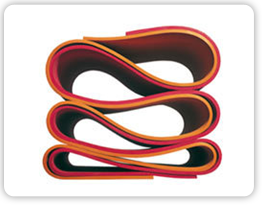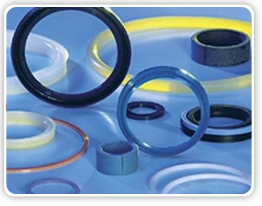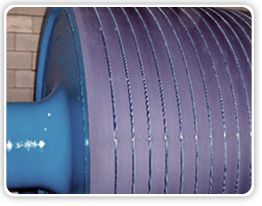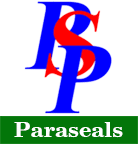NATURAL RUBBER (NR)

Natural rubber is derived from a dried milky liquid which could be obtained by cutting the bark of certain trees (Hevea Brasiliensis)
Hardness: -
Hardness varies from sponge to ebonite.
Tensile Strength: -
Has good tear and abrasion resistance and high tensile strength with good resistance properties.
Heat Resistance: -
Can withstand a continuous service temperature of approximately 60-70oC and when specially compounded than 80oC on the other hand , it remains flexible down to -60oc.
Feature: -
It has a fair good resistance to dilute acids and alkalies.
Applications: -
Natural Rubber is used in Mountings & Suspension bushings.
STYRENE BUTADIENE RUBBER (SBR)

Natural Rubbers poor resistance to Non - polar oils has given rise to synthetic Rubber. SBR is a copolymer of styrene and butadiene. It can is used along with natural Rubber or in place of natural Rubber to a certain degree.
Properties :-
- Tear resistance slightly Len than natural Rubber .
- Abrasion resistance in better than natural Rubber
- Renitence of SBR is ten than N.R
- When specially compounded can stand temperature up to 90oc.
NITRILE RUBBER (NBR)

Commonly reffered as Nitrile or Buna 'N' it is a copolymer of acrylo nitrile and butadiene.
Feature :-
Is its excellent resistance to oil and liquid fuel.
Hardness :-
Hardness ranges from 20 shore 'A' to ebonite.
Tensile Strength :-
The degree of tensile strength varies but tensile strength is highest when the hardness is between 70 and 80 shore 'A'.
Compression Set :-
Very low Comp. Set is obtainable when suitably formulated and well cured.
Heat Resistance :-
It can with slow a long service at temperatures of 90oc to 100oc . At higher temperature they behave satisfactory for several weeks.
Flexibility :-
It remain flexible at -30oc and -45oc when suitably formulated. Oil and fuel resistance as well as resistance to heat , abrasion, water and gas permeability. It uses in structural adhesives, auto transmission seals, water pump seals , milking inflections, fuel lines and hose , flexible couplings etc.
CHLOROPRENE RUBBER (CR)

Popularly known as Neoprene Rubber
Features :-
It has excellent resistance to weathering and ozone, flame resistance, moderately good resistance to oils and considerable resistance to many chemicals.
Tensile Strength :-
Tensile Strength slightly lower than natural rubber.
Tear Strength :-
High teas strength can be obtained by using a lower degree of cure.
Compression Set:-
With the right grade of rubber fillers and accelerators, a good resistance to compression set can be obtained.
Applications :-
Strips for auto industry ; seals and bellow, for machines and motor vehicles, Buffers and springs for heavy machines , Roll covers for machines, process
HYPALON (CSM)

Chemically known as chlorosulphonated polyethylene.
Features :-
It has outstanding resistance to ozone attack and colour retention daring light exposure. They have excellent resistance to flame, oils , heat weather, chemicals and abrasion resistance.
Tensile Strength :-
With the appropriate grade, a high tensile strength can be obtained.
Compression Set :-
The resistances to comp. Set is good.
HYPALON (CSM)
Heat Resistances :-
It is serviceable upto 120oc continuously and higher temperature intermittently.
Applications :-
Hyparlon used is Fleotic products, Hose for automotive industry, Automotive part like a spark plug boots , primary and ignition wise etc.
BUTYL RUBBER (IIR)

It is a copolymer of isobutylene and isoprene.
Features :-
It has good resistance to chemicals of polar solvents and to aqueous acid, bases and oxidizing agents, and also it has good resistance to animal and vegetable oils but poor resistances to mineral oils.
Tear strength :-
At room temperature, the leas resistance is slightly less than tat of natural rubber , but at higher temperature is almost equal to that of natural rubber.
Temperature Resistance :-
A conventional cured compound is continuously serviceable at 100oc.
Flexibility :-
Bulyle rubber remain flexible even at -70oc.
Applications :-
It used in irrigation tubing, tank linings, roof coverings, printing rolls, glovers, sporting goods, inflatable goods, weather strips, pedal pads, radiator loses etc.
POLYACRYLIC RUBBER (ACM)

Features :-
It has excellent resistance to heat and oils and serviceable at continuous temperature of 180oc and intermittent temperature of 200oc. It has excellent ozone resistance, resistance to sunlight fading resistance to hot oils.
Hardness :-
40 to 90 shore 'A'
Elongation :-
100 - 400 %
POLYACRYLIC RUBBER (ACM)
Tensile Strength :-
70 kg. Km2 - 140 kgkm2
Compression Set :-
at 150oc is between 20 - 35%
Applications :-
It mostly used in the manufacturing of near end bearing seals, automatic transmission seals, value stem seals , diaphragm stock, etc.
ETHYLENE PROPYLENE DIENE MONOMER (EPDM)

Features :-
This is a destructive polymer in that if combines excellent resistance to deterioration by ozone , Oxygen , weather, heat & chemicals. It can stand a continuous temperature upto 140oc and remain flexible till -50oc.
Hardness :-
40 - 90 shore A
Tensile Strength :-
Maximum tensile strength can be exceeds 200 by km2.
Compression Set :-
With special compounding very good Comp. Set is obtainable.
Steam Resistances :-
It has excellent less than to steam . It remain serviceable even at high steam pressures of 250 p.s.i.
Chemical Resistance :-
EPDM are resistance to most polar materials such as water, phosphate esters, kefones, alcohols and glycols. They are used in contact with various acids, alkalies and vegetables , oils.
Applications :-
EPDM extensively used in the automotive industry as door seals bushings, gaskets, radiator hose. brake seals , body mounts etc.
SILICON RUBBER (VMQ)

Features :-
Silicon Rubber has excellent resistance to hot air and at the same time remain flexible at extremely low temperatures. The vulcanisater withstand acids, ozone and weathering including the action of sunlight at high attitudes and of ultra violet light. It has outstanding physiological properties which is better than that obtainable with any other elastomers available.
Heat Resistance :-
It has permanently resistant to hot air at temperature upto 180oc and even at 250oc they remain elastic after several thousand hours. They finally made useless by produced exposure to steam at temperature above 130oc.
SILICON RUBBER (VMQ)
Flexibility :-
It remain flexible ate temperature down to -100oc.
Compression Set :-
Appropriately cured silicon has extra ordinary low compression set.
Applications :-
It used aerospace industry in the form of O-Rings , Seals and gasket, in gas turbines engines, piston and fit engines. Washer for electric capacitors, diaphragms for electric contractors etc.
VITON (FKM)

Features :-
The continuous services limits for viton are over 3000 hrs @ 230oc, 1000 hours @ 260oc and 240 hours @ 285oc and so on. They are ozon proof but it is difficult to imagine the conditions which would be necessary for ozone to crack viton.
Hardness :-
60 to 95 shore 'A'
Compression Set :-
Best Comp. Set resistance is obtained if valcanisates are oven post - cured. Oil, Chemicals and Solvent Resistance :- Viton is highly resistance to most oils chemicals and solvents.
Applications :-
O - Ring seals for high temperature Performance in aircraft lubricants and hydralic fluids. Flat gaskets, Packings , other seals for heat and chemicals resistance. Also used on gasoline pumps, vacuum drier transformer, rotameter, speedometer cable seals, oil well components etc.
POLYURETHENE (AU/EU)

Features :-
These ate high molecular weight organic materials having long numbers of urethane (NH-C-OO) groups. It has excellent abrasion resistance, Oil and fuel resistance and have excellent physical properties.
Properties :-
Polyurethene has excellent resistance to weather by conditions like Ozone, Oxidation, Ultra -violet radiation. It has excellent resistance to gas such as popane, ethylene and valued gas.
Uses :-
Uses in application like seals for door locks, bumpers components, footwear industry, O-rings Packings, roll cover wheels etc...
POLYBUTADIENE (PBR)
It is horpolymer of butadiene and it can be prepared in either a solution or emulsion polymerization system.
Feature :-
Polybutadiene is superior to natural rubber because of its high abrasion resistance, excellent heat resistance , excellent low temperature properties good resistance to light crazing etc.
Uses :-
It mainly uses in Tyre tread, Tyre re-trend rubbers, Tyre car cases and side wall, Also used in shoe soles and shoe products.
PVC BLENDED (NBR)

This is non staining polymer prepared by blending 50 to 70 parts of NBR to 50 to 30 parts of PVC of Polyvinyl chloride.
Features :-
It has good processability for extrusion providing excellent smooth and glossy finish to the end product giving it a plastic like appearances.
Properties :-
PVC-NBR has excellent resistance to Oil. gasoline, Ozone and weathering, as well as abrasion resistance. It replaces NBR in applications where improved weathering resistance to required and also where low compression set is not necessary as compression set of PVC - NBR is quite high when compared to NBR alone.
Uses :-
It is used in compared where high hardness compounds are required without addition of extra fillers (Black of mineral ) Some of the applications are in. Manufacturing hoses for propane gas, parts for automobile rubber windows , foresees, gaskets. Oil resistance shoe soles etc...
CARBOXYLATED NITRILE RUBBER (XNBR)

Features :-
XNBR are terpolymers of acrylonitrile, butadiene, and an acidic organic monomer grade of XNBR vary from one another in A CN content and concentration of carboxyl groups.
Properties :-
XNBR has the same heat. Oil and fuel resistance as regular Nitrile rubber but provides superior abrasion of resistance and excellent mechanical properties even at temperature around 110oC. The Main advantage of XNBR is, it is comparable to polyurethane in many application at much lower cost.
USES :-
It is used in fuel resistance application where excellent abrasion resistance, tensile strength, tear strength, high modulus is required. Products like belting, footwear hoses, Industrial wheels "O" rings, Packings, Pump impellers, textile etc.
HYDROGENATED NITRILE RUBBER (HNBR)
Features :-
HNBR elastomers are made of by the selective hydrogenation of Nitrile rubbers in the presence of sophisticated catalyst systems. It also know as highly saturated Nitrile (HSN). It used at high temperature between 150oc to 175oc.
Low temperature properties is :-
It has very good low temperature properties in leave of both brittle point and stiffness rubber (VMQ type)
Compression set :-
The compression set resistance at elevated temperature around 160oc is excellent and is second to silicone rubber (VMQ type)
Heat resistance :-
The workable temperature for HNBR varies from 150oc to 175oc depending on the percentage of un saturation and his make it suitable for application against oxidation ozone and other weathering conditions.
Fluid Resistance :-
HNBR compounds show very little loss in physical properties in different fluids, as swell in oils such as engine oil, transmission Oil, hypoid gear oil etc.
Application :-
It used in Oil and Gas Industry; Military and Aerospace like in Rocket bladder, Navy cable etc.., Also used in textile , fuel line, Hoses, engine oil cooler power steering, transmission Oil cooler, air conditioning etc..,

